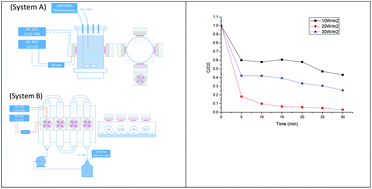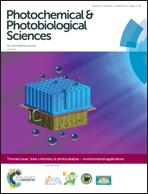An approach to utilize the artificial high power LED UV-A radiation in photoreactors for the degradation of methylene blue
Abstract
Utilization of UV LED light is trending in the development of photoreactors for pollutant treatment. In this study, two different geometries were studied in the degradation of methylenebBlue (MB) using high power UVA LED as a source of light. The dosage, initial concentration, electric power, and H2O2 addition were evaluated in the two geometries: a mini CPC (Cilindrical Parabolic Collector) and a vertical cylindrical with external irradiation both coupled with LED UVA. Best degradation was obtained for 0.3 g L−1 TiO2, 40 min, and 15 ppm of MB of initial concentration in the standard batch reactor. It was found that the best system was a cpc geometry. Also, hydrogen peroxide was used as an electron acceptor and 97% degradation was obtained in 30 min with 10 mM H2O2 and 0.4 g TiO2/L. Power of the LEDs was also evaluated and it was found that 20 W m−2 is the best operational condition to achieve the best MB degradation avoiding the oxidant species recombination.

- This article is part of the themed collection: Solar chemistry & photocatalysis – environmental applications


 Please wait while we load your content...
Please wait while we load your content...